- News
- Reviews
- Bikes
- Components
- Bar tape & grips
- Bottom brackets
- Brake & gear cables
- Brake & STI levers
- Brake pads & spares
- Brakes
- Cassettes & freewheels
- Chains
- Chainsets & chainrings
- Derailleurs - front
- Derailleurs - rear
- Forks
- Gear levers & shifters
- Groupsets
- Handlebars & extensions
- Headsets
- Hubs
- Inner tubes
- Pedals
- Quick releases & skewers
- Saddles
- Seatposts
- Stems
- Wheels
- Tyres
- Tubeless valves
- Accessories
- Accessories - misc
- Computer mounts
- Bags
- Bar ends
- Bike bags & cases
- Bottle cages
- Bottles
- Cameras
- Car racks
- Child seats
- Computers
- Glasses
- GPS units
- Helmets
- Lights - front
- Lights - rear
- Lights - sets
- Locks
- Mirrors
- Mudguards
- Racks
- Pumps & CO2 inflators
- Puncture kits
- Reflectives
- Smart watches
- Stands and racks
- Trailers
- Clothing
- Health, fitness and nutrition
- Tools and workshop
- Miscellaneous
- Buyers Guides
- Features
- Forum
- Recommends
- Podcast
review
£2,500.00
VERDICT:
An efficient and reactive road bike that offers an excellent ride quality and the reassurance of hydro disc brakes
Weight:
8,570g
Contact:
At road.cc every product is thoroughly tested for as long as it takes to get a proper insight into how well it works. Our reviewers are experienced cyclists that we trust to be objective. While we strive to ensure that opinions expressed are backed up by facts, reviews are by their nature an informed opinion, not a definitive verdict. We don't intentionally try to break anything (except locks) but we do try to look for weak points in any design. The overall score is not just an average of the other scores: it reflects both a product's function and value – with value determined by how a product compares with items of similar spec, quality, and price.
What the road.cc scores meanGood scores are more common than bad, because fortunately good products are more common than bad.
- Exceptional
- Excellent
- Very Good
- Good
- Quite good
- Average
- Not so good
- Poor
- Bad
- Appalling
The Merida Scultura Disc 6000 is a reactive road bike with plenty of frame stiffness to turn your effort into speed, and it offers way more comfort than you might expect.
Let's kick off by talking about that comfort. It's not the obvious place to start a discussion of a performance-orientated bike, admittedly, but this is one of the Scultura Disc 6000's key features so let's go with it.
Comfortable ride
Even when you're riding on rough, pockmarked roads – and let's face it, that's likely to be a lot of the time – the Scultura delivers a smooth ride without the buzz often associated with bikes of this kind. If you're used to a typical hard-riding race bike, you'll be surprised at the degree to which the Scultura plasters over the cracks. The big jolts still come through, of course, but they're a little muted, and a lot of the high-frequency vibration doesn't get to you at all.
How come? Merida says that its Flex Stay seatstays and chainstays absorb bumps and reduces vibration... although, it must be said, a lot of other brands say pretty much the same thing about their bikes. Merida says the lack of a brake bridge between the seatstays allows it to dial in a bit more comfort.
You also have a skinny 27.2mm diameter seatpost that certainly flexes to a degree, and a Prologo Kappa 3 saddle with a supple shell and a reasonable amount of padding. It's quite spongy, in fact. Plus, you have 25mm Continental Grand Sport Race tyres that actually measure 27mm across on the Fulcrum Racing Expert wheels. That fairly large buffer of air between you and the road makes a big difference to the way the bike feels. You can go wider and fit 28mm tyres if you like; there's enough space (25mm is the maximum you can fit on a rim brake Scultura).
The sum total of that little lot is that the Scutura Disc 6000's ride quality feels more like that of an endurance bike than a typical performance bike... And that brings us seamlessly on to the geometry.
Weights & measures
The Merida Scultura Disc Team that Jez rode and loved last year was built around the CF4 version of the Scultura frame. The Scultura Disc 6000 is built around the CF2 version.
What's the difference? Well, the CF4 version is the racier of the two, with a more aggressive riding position. The CF2 version that we have here has a taller head tube – 20mm taller in the case of the 56cm model, giving a stack (the vertical distance between the centre of the bottom bracket and the top of the head tube) that's 22mm higher, and a reach (the horizontal distance between those two points) that's 5mm shorter. That's a significant difference.
This CF2 configuration doesn't put you in the most upright riding position ever but it's considerably more relaxed than the CF4. You can still get your back flat when you want to get busy on the drops, but sitting up with your hands on the hoods is unlikely to result in regular trips to the chiropractor, even if you're not particularly flexible.
The other key difference between the two frames is that whereas the CF4 weighs a claimed 900g, the CF2 is heavier at just under 1,000g. That's still light for a disc-compatible frame.
Our complete bike, built up with a mostly Shimano Ultegra groupset and Fulcrum Racing Expert wheels, hit the road.cc Scales of Truth at 8.57kg (18.9lb). That makes it 840g heavier than the Merida Scultura Disc Team that Jez reviewed – and £4,000 cheaper, so you can't really argue. It's also 670g heavier than the rim brake version of the Scultura 6000 that Stu reviewed a year ago.
Personally, I wouldn't get too hung up on weight. This is a bike that feels reactive. Don't let all that talk of comfort and a fairly relaxed geometry give you the impression that the Scultura 6000 Disc puts in a staid performance. Far, far from it. This is a reactive machine that's a lot of fun to ride.
The tapered head tube (1 1/8in upper bearing, 1 1/2in lower bearing) and full carbon fork are super-solid, never sauntering off line due to the forces of hard cornering. The Continental tyres offer loads of grip in both wet and dry conditions, and Shimano's hydraulic disc brakes provide you with the confidence you need to take on the bends in full attack mode.
The bottom bracket is equally stout. The BB86 system uses an axle that's 24mm in diameter rather than the 30mm you get with a BB30 system, but I couldn't induce much flex down there when accelerating hard or climbing while out of the saddle, and I was stomping away for all I was worth. The Scultura Disc 6000 performs like the rim brake version in that respect, giving a feeling of superb efficiency.
The Reacto is the full-on aero road bike in Merida's range but the Scultura boasts aerodynamic features of its own. The down tube, seat tube and seatstays have cross sections that are based on the NACA0028 aerofoil wing profile with a fastback trailing edge. Rather than trailing off, the back of the aerofoil profile has been chopped off square, which is a design feature employed by many other bike brands. The idea is to retain most of the aerodynamic performance while saving weight and improving handling.
I really couldn't tell you how much time the tube profiles save in the real world, although Merida says that the Reacto is more aerodynamically efficient. The Reacto's frame tubes are are based on the same NACA airfoil but the trailing edge is cut off later because weight is less of an issue, and this has a slight beneficial effect on the aero performance.
Downhill fast
One aspect of the ride that I haven't yet touched on is descending, and I need to do that because it's a real strength. The Scultura feels planted when you head downhill, without any of that skittish behaviour that you sometimes get. Bikes occasionally get knocked off line by small lumps and bumps and leave you fighting for control, but things are remarkably serene here, even when your bike computer tells you you're going far faster than might be sensible. Whether you're weaving around using just your bodyweight or turning hard into a bend, the bike behaves impeccably. Tracking superbly, it's a lot of fun through the twists and turns and, as mentioned, you always have the hydraulic disc brakes to help you out if you've overcooked it.
Those Shimano RS805 hydraulic disc brakes, working on 160mm rotors, put in an excellent performance. The advantage over rim brakes isn't massive in dry conditions but it's significant in the wet when it's far easier to judge exactly how they'll respond to any given pressure at the lever. Rim brakes sometimes don't do a lot for a couple of wheel revolutions. These disc brakes kick in straightaway whatever, so you can leave your braking that little bit later and occasionally do without it entirely. I got the feeling that the knowledge that I could scrub off speed very quickly if I needed to sometimes allowed me to ride faster and looser than I otherwise would have.
Merida has developed a unique mount for the rear calliper with an aluminium heat-sink fitted between the brake and the chainstay. It says that the front brake is well cooled because it is exposed to the oncoming airstream but that temperature build-up can be greater at the more sheltered rear brake. For this reason Merida engineers have come up with the Disc Cooler, which dissipates heat through its CNC milled cooling fins.
Does it work? If road.cc wants to send me overseas to find some hot mountain descents I'll let you know. Hawaii, maybe. I've been riding this bike on UK roads over the winter so I can't tell you how it performs in more testing conditions.
Finishing kit
The Shimano hydraulic brake levers are a bit chunkier than their rim brake counterparts. They're more of a handful when you're riding on the hoods and the front end is quite a bit taller. I prefer more slimline dual control levers but you can't have everything (well, the new Dura-Ace Di2 9120 levers for mechanical shifting and hydraulic braking are virtually the same shape as the standard 9100 mechanical shifting and rim brake levers).
The RS805 brakes are Ultegra level, matching much of the rest of the Scultura's spec: both the front and the rear derailleurs are Ultegra, as is the chainset. That chainset is a compact (with a 50-tooth outer ring and a 34-tooth inner ring) matched up to an 11-28-tooth cassette which is also Ultegra. This is the same gearing you get on Merida's £2,150 Scultura Disc 5000 and £4,000 Scultura Disc 7000-E. You have to go right up to the £6,500 Scultura Disc Team for a 52/36-tooth chainset, which is something I'd prefer. The right gearing is always going to come down to the individual, though, and I guess Merida knows its market.
The Fulcrum Racing Expert wheels are held in place by 12mm thru-axles (100mm front, 142mm rear). They have 27.5mm deep, 23mm wide aluminium rims front and rear. They're not especially light, and I wouldn't call them a high point of the Scultura's spec sheet, but they do a decent job and they're still perfectly true after several weeks of abuse dished out by yours truly.
> Your guide to Merida's 2017 road bike range
Overall, the Merida Scultura Disc 6000 is a bike with a whole lot to offer. It's quick and reactive, efficiently converting your muscle power into speed, and it feels calm and composed even on screaming descents and through the tightest of turns. On top of all that, it's very comfortable, and Shimano's hydraulic disc brakes give you a ton of confidence in all conditions.
Verdict
An efficient and reactive road bike that offers an excellent ride quality and the reassurance of hydro disc brakes
road.cc test report
Make and model: Merida Scultura Disc 6000
Size tested: Large
About the bike
State the frame and fork material and method of construction. List the components used to build up the bike.
FRAME SCULTURA DISC CF2
FORK Full carbon with tapered carbon steerer and 12mm bolt through
DERAILLEUR Shimano Ultegra 11 speed
SHIFTERS Shimano Ultegra disc, 22 speed
BRAKE LEVER Shimano Ultegra
BRAKES Shimano RS805 hydraulic disc, 160mm rotor
CHAINWHEEL Shimano Ultegra 50-34
BBSET Pressfit 86
CHAIN KMC X11EL, 11 speed
WHEELS Fulcrum Racing Expert disc wheelset with 12mm bolt through axle
CASSETTE Shimano CS-6800, 11 speed,11-28
TYRES Continental Grand Sport Race 25mm Kevlar bead
STEM Merida Expert -5 degree with carbon faceplate
HANDLEBAR Merida Expert double butted 6061 aluminium compact drop
HEADSET FSA BB410P/55E 1-1/8in/1.5in with H2246A:15mm neck H:19L 20.6L
SEAT POST Merida Expert carbon 27.2mm with 15mm lay back
SADDLE Prologo Kappa 3
Tell us what the bike is for, and who it's aimed at. What do the manufacturers say about it? How does that compare to your own feelings about the bike?
The Sculturas are Merida's lightweight road bikes. The CF2 models have geometries that are more relaxed than those of the CF4 bikes, although they're still performance orientated.
Frame and fork
Overall rating for frame and fork
8/10
Tell us about the build quality and finish of the frame and fork?
It's very good throughout.
Tell us about the materials used in the frame and fork?
Merida says, "Carbon bikes are often subject to considerable strain. To increase the quality of the used material, Merida utilises this premium technology: The carbon mats are enriched with special nanoparticles which strengthen the matrix of the epoxy resin. In this way, the impact resistance of the final component construction can be increased successfully by up to 40%.'
The fork is full carbon.
Tell us about the geometry of the frame and fork?
Merida makes its Scultura Disc bikes in three frame variants.
"The CF4s aggressive geometry is markedly toned down in the CF2 [which we have here] and Lite frames; the latter are still performance- oriented but feature a much more upright seating position," says Merida.
The top tube lengths are the same across the different variations but the head tubes are taller on the CF2 and Lite frames.
How was the bike in terms of height and reach? How did it compare to other bikes of the same stated size?
I had the 56cm version of the frame, which has a 575mm top tube, which is long for a bike of this size.
Riding the bike
Was the bike comfortable to ride? Tell us how you felt about the ride quality.
It's very comfortable. This is one of the most impressive features of the Scultura Disc.
Did the bike feel stiff in the right places? Did any part of the bike feel too stiff or too flexible?
It feels very stiff around the bottom bracket and through the head tube.
How did the bike transfer power? Did it feel efficient?
It certainly felt efficient.
Was there any toe-clip overlap with the front wheel? If so, was it a problem?
None.
How would you describe the steering? Was it lively, neutral or unresponsive? Quick, but not twitchy.
Tell us some more about the handling. How did the bike feel overall? Did it do particular things well or badly?
The handling is excellent. I particularly enjoyed descending on this bike. It feels planted and in control.
Which components had the most effect (good or bad) on the bike's comfort? would you recommend any changes?
Some people might find the saddle a bit squidgy, but they're always down to personal taste anyway.
Which components had the most effect (good or bad) on the bike's stiffness? would you recommend any changes?
You might prefer a chainset with a 30mm diameter axle but I felt very little flex around the bottom bracket.
Rate the bike for efficiency of power transfer:
9/10
Rate the bike for acceleration:
7/10
Rate the bike for sprinting:
7/10
Rate the bike for high speed stability:
8/10
Rate the bike for cruising speed stability:
8/10
Rate the bike for low speed stability:
8/10
Rate the bike for flat cornering:
9/10
Rate the bike for cornering on descents:
9/10
Rate the bike for climbing:
7/10
The drivetrain
Rate the drivetrain for performance:
8/10
Rate the drivetrain for durability:
8/10
Rate the drivetrain for weight:
8/10
Rate the drivetrain for value:
8/10
Tell us some more about the drivetrain. Anything you particularly did or didn't like? Any components which didn't work well together?
It's nearly all Shimano Ultegra which is a great groupset.
Wheels and tyres
Rate the wheels for performance:
7/10
Rate the wheels for durability:
7/10
Rate the wheels for weight:
7/10
Rate the wheels for comfort:
7/10
Rate the wheels for value:
7/10
Tell us some more about the wheels.Did they work well in the conditions you encountered? Would you change the wheels? If so, what for?
The wheels have stayed true over a long test period but they're not a highlight of the spec, in my opinion.
Rate the tyres for performance:
8/10
Rate the tyres for durability:
8/10
Rate the tyres for weight:
8/10
Rate the tyres for comfort:
8/10
Rate the tyres for value:
8/10
Controls
Rate the controls for performance:
8/10
Rate the controls for durability:
8/10
Rate the controls for weight:
8/10
Rate the controls for comfort:
8/10
Rate the controls for value:
8/10
Tell us some more about the controls. Any particularly good or bad components? How would the controls work for larger or smaller riders?
They're very good, although they're a bit chunkier than rim brake dual control levers.
Your summary
Did you enjoy riding the bike? Yes
Would you consider buying the bike? Yes
Would you recommend the bike to a friend? Yes
Rate the bike overall for performance:
8/10
Rate the bike overall for value:
8/10
Use this box to explain your score
The Merida Scultura Disc 6000 puts in a very good performance. Carbon road bikes from the large brands equipped with a Shimano Ultegra groupset and disc brakes start at around £2,300 and go up to £4,000 and even higher. This is a very good price for what you're getting here.
About the tester
Age: 43
I usually ride: My best bike is:
I've been riding for: Over 20 years I ride: Most days I would class myself as: Expert
I regularly do the following types of riding: commuting, club rides, sportives, general fitness riding
Mat has been in cycling media since 1996, on titles including BikeRadar, Total Bike, Total Mountain Bike, What Mountain Bike and Mountain Biking UK, and he has been editor of 220 Triathlon and Cycling Plus. Mat has been road.cc technical editor for over a decade, testing bikes, fettling the latest kit, and trying out the most up-to-the-minute clothing. He has won his category in Ironman UK 70.3 and finished on the podium in both marathons he has run. Mat is a Cambridge graduate who did a post-grad in magazine journalism, and he is a winner of the Cycling Media Award for Specialist Online Writer. Now over 50, he's riding road and gravel bikes most days for fun and fitness rather than training for competitions.
Latest Comments
- Secret_squirrel 5 min 31 sec ago
And yet women as stastically far more likely to be abused whilst driving.... kinda undermines your argument no...?
- quiff 5 min 40 sec ago
It's not even just that - even the Met (quoted above) reported it as "junction of Newington Butts and Walworth Rd"! Perhaps struggling to...
- OnYerBike 10 min 20 sec ago
Is that normal for that spot? Pretty sure sand (and/or other sand-like substances) is commonly used to soak up spilled diesel, so if a load of sand...
- Tom_77 43 min 2 sec ago
My initial thought is "no way is that legal", but I'm not sure what law would ban it. Offences against the Person Act 1861makes it illegal to...
- quiff 1 hour 24 min ago
Holy thread resurrection Batman!
- mdavidford 1 hour 33 min ago
They really don't, though. They might say they do, but in reality the amount of money involved is a rounding error in the tax budget, and not worth...
- Surreyrider 1 hour 37 min ago
Don't worry, in the not too distant future the Telegraph won't have any readers. Latest calculations suggest they only have 170,000 readers (they...
- Hirsute 2 hours 52 min ago
He does it to make a point. As I remember from his videos he is rarely not in control of the situation. Although as it's all on shitter these days,...
- mdavidford 2 hours 57 min ago
But if it's a bridleway or a permissive path they're within their rights to be.
- Secret_squirrel 3 hours 39 min ago
This is my favourite rant - but I really dont see the point of windproof cycling clobber that isn't properly waterproof - especially for the UK. ...










































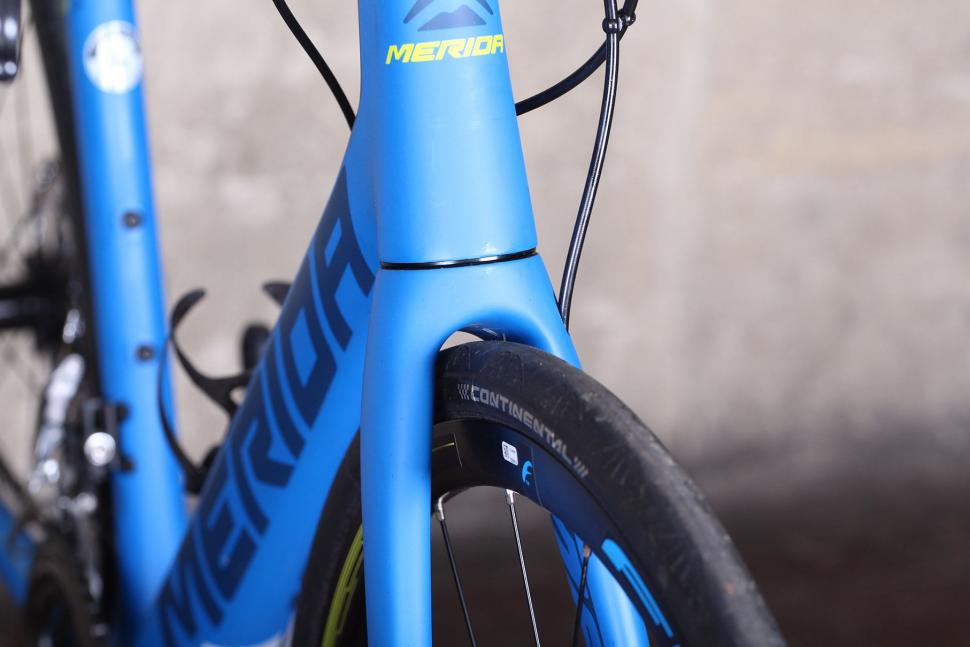




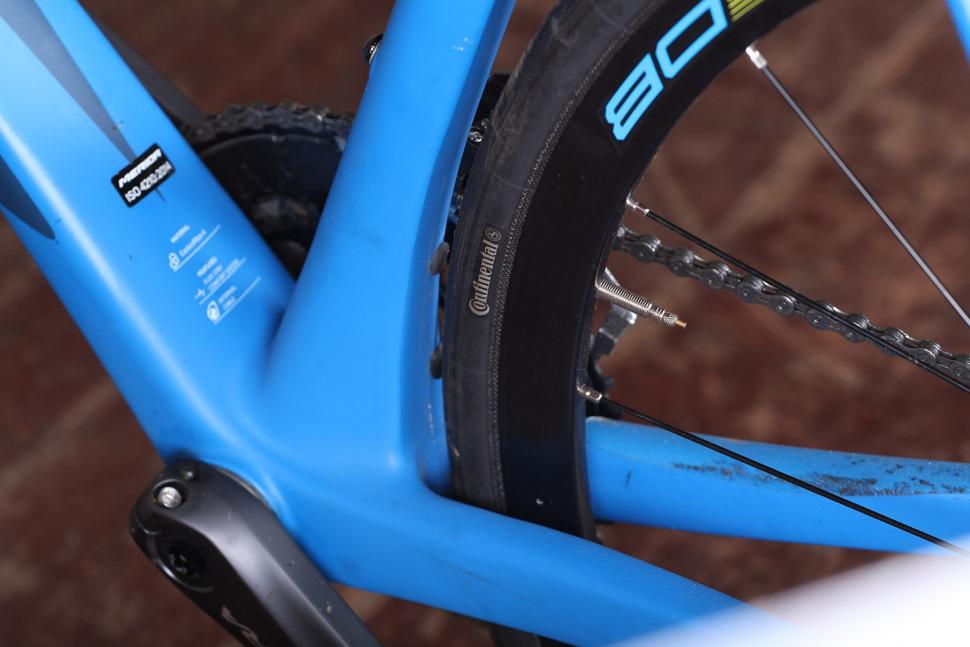
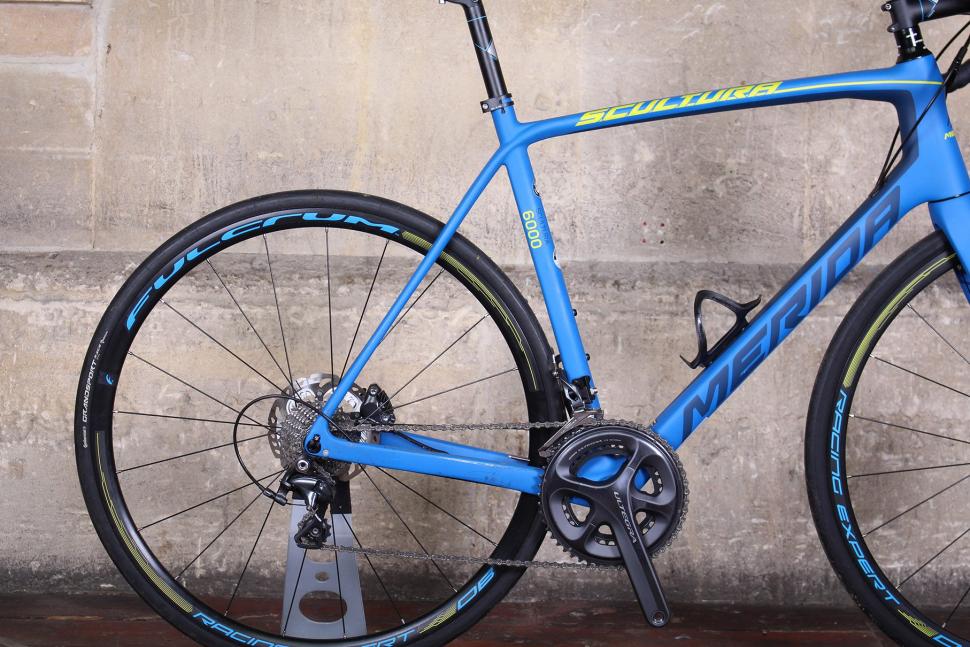

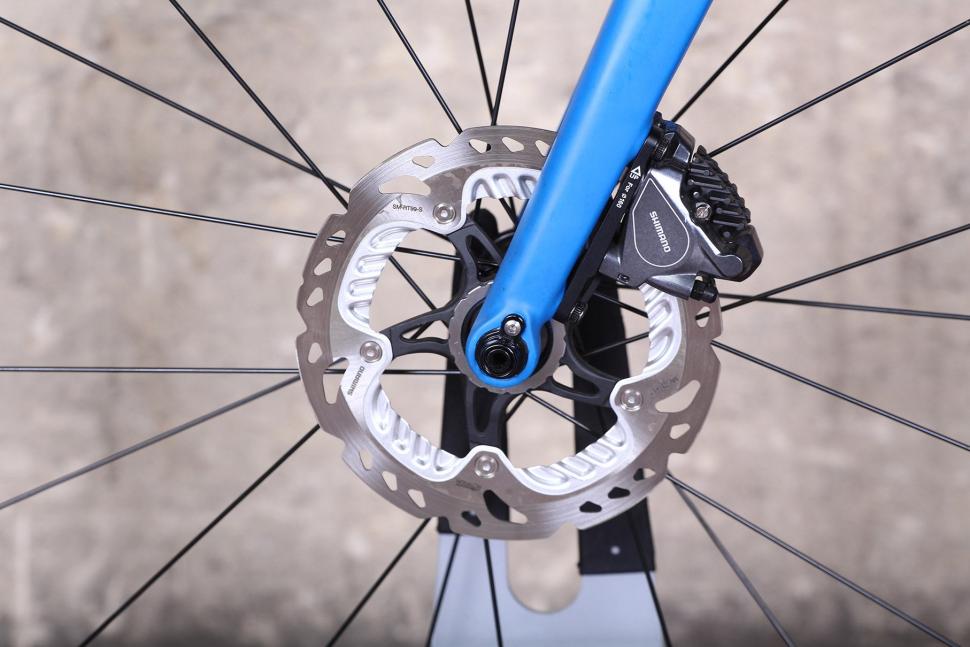


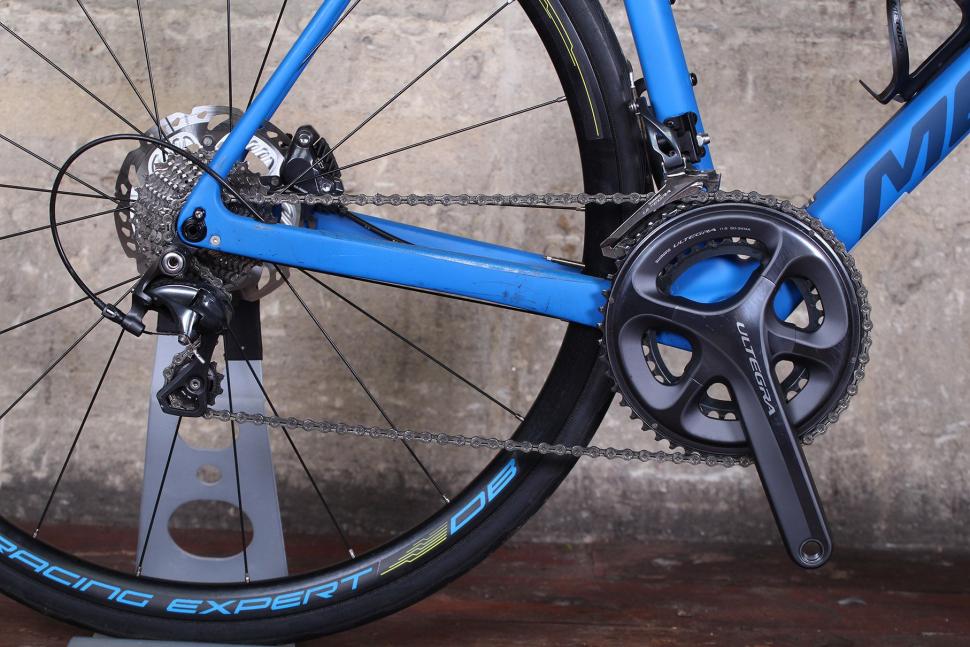




Add new comment
5 comments
Good evening , Mat.
Is it 56 size (L) was good for you? Not to small ? My height also 190 cm , and i look to Scultura 6000 size XL. What size be better ( i dont have the opportunity to try it , only on-line order )
Hi Andy_R
I can't say which is best for you, but I'm definitely best off on a size large with a 575mm top tube. I'm long in the leg and relatively short in the body so I tend to take a smaller size that most people my height, and need to have a lot of seatpost showing.
Photo 21 says the frame is a CF4, but review says CF2, which is correct?
Also, are there any issues with heel clearance on the chain stays? Photo 14 shows some marks on the right stay.
Wow nice eyes!
I would trust what it saying on frame though, information could be "outdated" and "copy paste" from the previous version
I think there Scultura 6000 CF 2 version but its previous generation
It's a CF2 frame.
Nope.